Painting is a popular DIY task that allows individuals to personalize their spaces and refresh old surfaces. However, achieving a smooth, professional finish can be challenging, especially for those unfamiliar with the proper techniques. One common issue encountered during painting projects is the appearance of brush marks. These marks can occur due to improper technique, such as using the wrong type of brush, applying inconsistent pressure, or opting for low-quality paint that doesn’t level out smoothly. Understanding how to paint with a brush without brush marks is crucial for creating a polished final product.
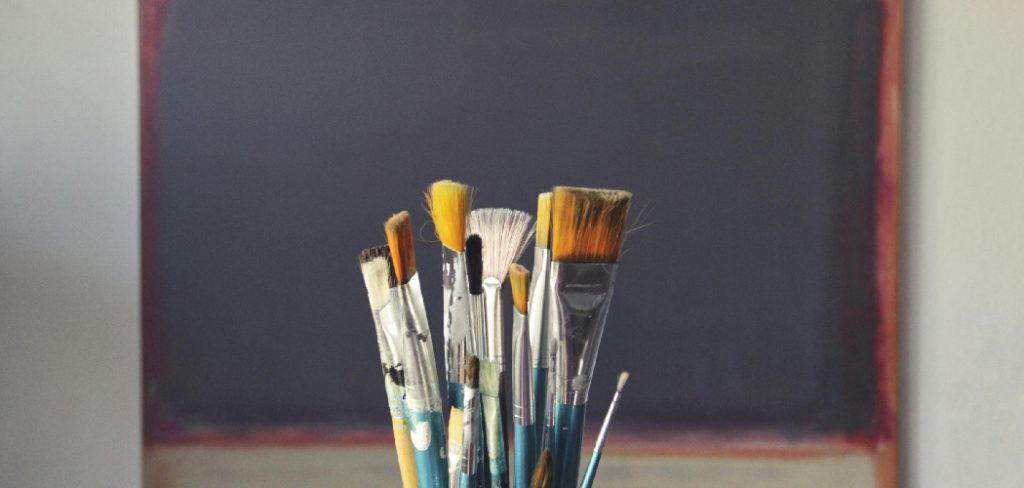
By learning and applying the right techniques and choosing appropriate materials, you can enhance your painting skills and achieve a flawless finish that brings out the best in any project.
Choosing the Right Brush
Selecting the right brush is a fundamental step in learning how to paint with a brush without brush marks. The type of bristles plays a significant role; synthetic bristles are ideal for water-based paints because they resist absorbing water and maintain their shape, while natural bristles are better suited for oil-based paints, offering greater flexibility and a smoother finish. The quality of the brush is also paramount. Investing in high-quality brushes ensures even application and a more polished result, as they tend to hold more paint and shed less. Consider the specific task at hand when it comes to brush size and shape.
Angled brushes are perfect for detailed work like painting trim, while flat brushes are well-suited for larger surfaces. To ensure you choose the best brush, always test it before purchasing by checking for bristle flexibility and any potential shedding. These considerations will set the foundation for a professional finish in your painting projects.
Preparing the Surface for Painting
The key to achieving a flawless finish when painting is thorough surface preparation. Begin by cleaning the surface to remove any dust, dirt, and grease, which can prevent paint from adhering properly. Use a mild detergent solution and let the surface dry completely. Next, sanding is essential; employ fine-grit sandpaper to smooth out any existing rough patches. This step creates an even surface that allows the paint to glide smoothly, reducing the appearance of brush marks. Once sanding is complete, applying a primer becomes crucial.
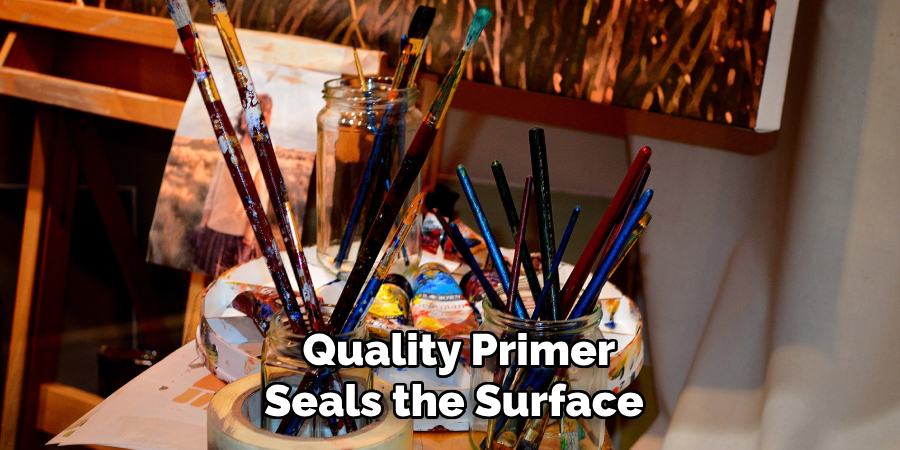
A quality primer seals the surface and creates a uniform base for your paint, further minimizing marks and enhancing durability. After priming, inspect the surface for imperfections. If necessary, lightly sand between primer coats to ensure a smooth base. This meticulous approach to surface preparation will significantly improve the final appearance of your painted project, ensuring a professional result that covers evenly and lasts for years.
Selecting the Right Paint
Choosing the right paint is vital to achieving a brush-mark-free finish. The quality of the paint plays a significant role; higher-quality paints often contain ingredients that promote self-leveling, reducing the potential for visible brush marks. This makes them a worthy investment for any painting project. Additionally, the paint finish can impact the appearance of marks. Consider using a satin or eggshell finish for fewer brush marks, as these offer a smoother, more forgiving surface compared to high-gloss finishes, which tend to highlight imperfections. Finally, thinning your paint can help attain a smoother application.
If the paint is too thick, it might not spread evenly; therefore, consider adding a small amount of water or mineral spirits to oil-based paints to thin them slightly. This should be done carefully to avoid compromising coverage. With these tips, you can enhance your painting results and achieve a perfect, mark-free finish.
How to Paint with A Brush Without Brush Marks: Techniques for Applying Paint
Achieving a flawless finish with a brush requires mastering a few key techniques to minimize brush marks. These methods involve how you load the brush, your strokes, and your overall approach to the task. By applying these principles, your painting projects will look professional and polished.
Loading the Brush Correctly
The process begins with proper brush loading. Dip the brush no more than one-third of the way into the paint; this prevents overloading, which can lead to dripping and excessive brush marks. Gently tap or wipe the brush on the can’s edge to remove any excess paint before application. This practice ensures that the brush holds the optimal amount of paint for rolling out smooth, even strokes without pooling.
Using Long, Smooth Strokes
When applying paint, opt for long and smooth strokes to maintain an even surface. This technique reduces overlap and promotes a seamless appearance. Begin with confident, even movements, moving the brush in a consistent direction. This also helps to distribute paint evenly, ensuring that each stroke merges smoothly with the next. Avoid backtracking over freshly painted areas, as this can create unwanted lines or texture.
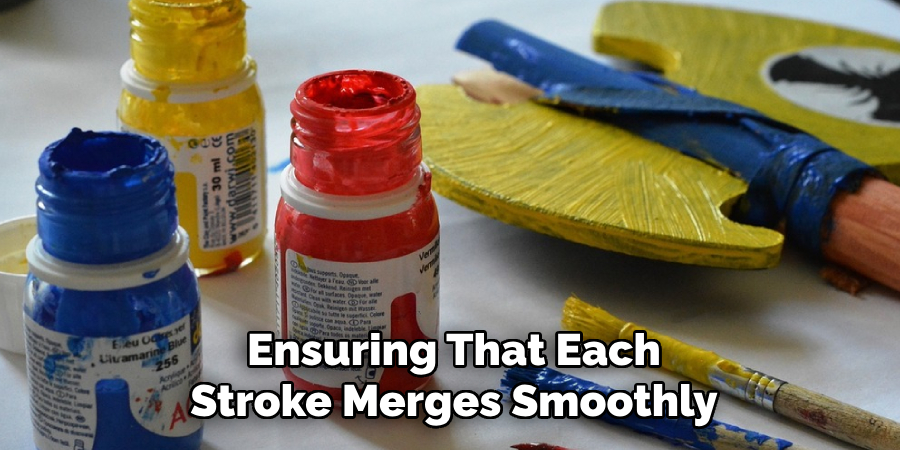
Keeping a Wet Edge
Maintaining a wet edge is crucial for blending strokes effortlessly and avoiding visible start-and-stop lines. Work quickly and methodically, ensuring that new strokes overlap slightly with wet paint. This continuity helps integrate different sections into one uniform finish. A wet edge is especially important when covering large surfaces, where stopping and starting can create visible transitions.
Applying a Light Touch
A gentle touch is critical in avoiding bristle marks and achieving a smooth surface. Apply enough pressure to spread paint across the surface without compressing the bristles excessively. This light touch minimizes surface disruption, helping the paint to settle smoothly without indentations or lines from the bristles.
Feathering
Feathering involves lightly brushing over freshly painted areas with minimal pressure to smooth out any existing lines or ridges. This technique ensures that any remaining brush marks or paint build-up is evened out before the paint dries. Feathering works best as a final pass over a newly painted area, contributing to a refined, finished appearance.
Working in Sections
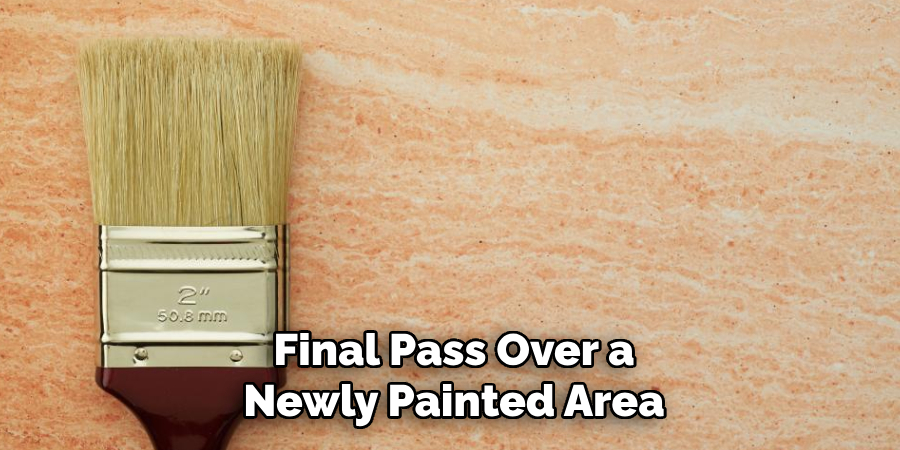
For larger surfaces, divide the area into smaller, manageable sections. This strategy keeps the paint from drying too quickly and ensures consistent coverage and texture across the entire surface. Focus on completing each section before moving to the next, maintaining a wet edge between sections to achieve a uniform look.
Painting Direction
Whenever painting on wood surfaces, align your strokes with the wood grain. Painting in the grain’s direction helps disguise potential brush marks and gives a more natural finish. This technique enhances the appearance and contributes to an aesthetically pleasing result, blending the paint seamlessly with the wood’s texture.
By practicing these techniques, you can significantly reduce brush marks, achieving a professional-level finish that enhances the beauty of your painted surfaces.
Tips for Smoothing Out Brush Marks
Achieving a flawless, professional-looking paint finish often requires addressing potential brush marks during and after application. Here are several strategies that can help ensure a smooth surface:
Using a Paint Conditioner
Incorporating a paint conditioner, such as Floetrol for water or Penetrol for oil-based paints, can significantly enhance your painting results. These conditioners work by extending the drying time, giving paint sufficient opportunity to level out before it sets, which greatly reduces the risk of visible brush marks. By helping the paint flow more smoothly, a conditioner minimizes drags and lines, making it easier to achieve an even coat, particularly in challenging areas or on textured surfaces.
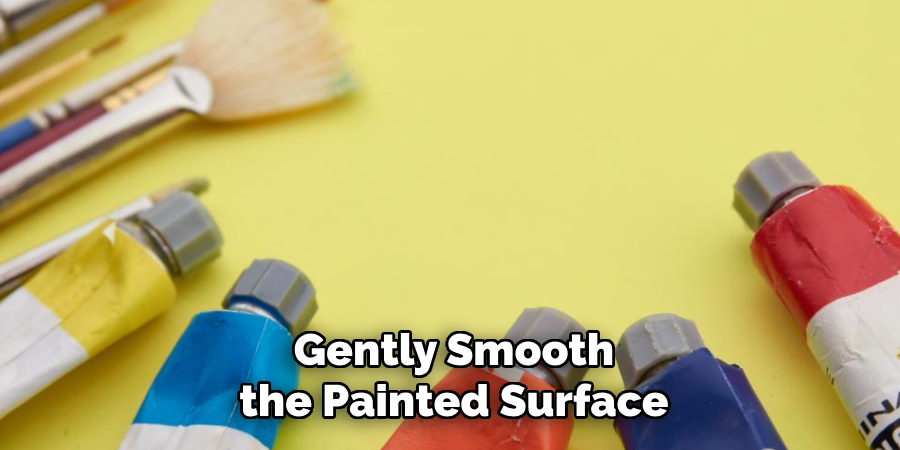
Sanding Between Coats
Light sanding between coats is indispensable for the smoothest possible finish. After each coat has dried completely, use very fine sandpaper, ideally within the 220-320 grit range, to gently smooth the painted surface. This step effectively removes any slight imperfections that may have developed, allowing for a more uniform base upon which subsequent coats can be applied. Always clean the sanded area with a tack cloth or microfiber cloth to remove any dust particles before proceeding to the next coat of paint.
Reapplying Paint in Thin Coats
One of the most effective techniques to avoid brush marks is to apply your paint in multiple thin coats rather than attempting to achieve coverage with one thick layer. Thin coats dry more evenly and are less prone to sagging or dripping, which can compromise the finish. Allow each layer to dry completely before applying the next, ensuring a buildup of smooth and blemish-free layers that collectively provide an opulent finish.
Checking for Imperfections
Before applying additional coats, carefully inspect your work under good lighting to identify any marks, uneven areas, or spots where the coats may be inconsistent. Spot-checking ensures that each layer addresses potential errors before multiplying them by subsequent coats. Correct any imperfections by lightly sanding or feathering the areas as needed, which prepares the surface for the next coat to adhere seamlessly. With these methods in place, the resulting painted surface is likely to be pristine, with brush marks minimized to an exceptional standard.
Finishing Touches
Conducting a final sanding before applying the topcoat is essential to ensure your painting project concludes with a flawless finish. Use very fine sandpaper, preferably 320 grit or higher, to lightly sand the surface. This step will smooth out any remaining imperfections and prepare the paint for the topcoat. When it comes to the topcoat, choose a product that provides extra protection and enhances the overall appearance with a polished finish. This layer serves as a shield, protecting the paint from wear and environmental factors, and contributes to a stunning, professional look.
Proper tool maintenance is crucial for future projects. After completing your project, clean your brush thoroughly to prolong its life and maintain its performance. Rinse it under warm water until the water runs clear, or use a brush cleaner if you’ve used oil-based paints, ensuring no paint residue remains. Store the brush in its original packaging or wrap it in a clean cloth to help retain its shape.
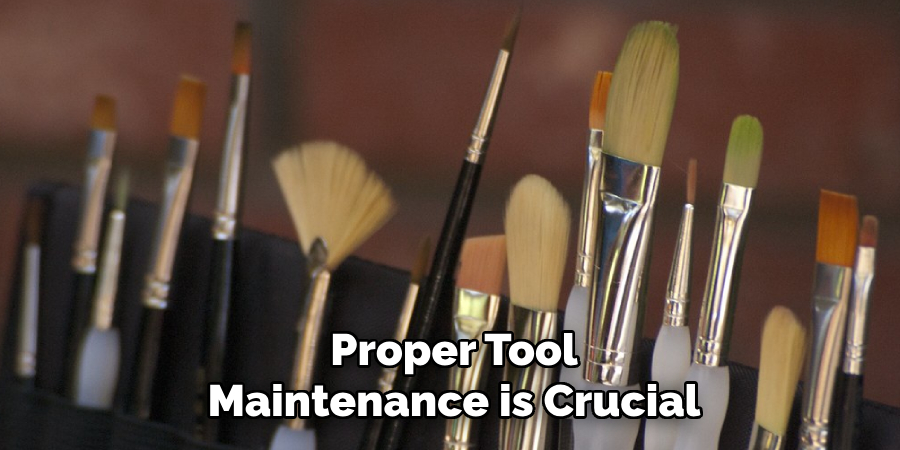
Finally, inspect your finished project closely. Look for areas where the paint might appear uneven or where touch-ups are necessary. Examine the surface under different lighting conditions, as this can reveal inconsistencies you might otherwise miss. Addressing touch-ups promptly ensures a uniform, pristine finish that reflects your attention to detail and commitment to quality.
Common Mistakes to Avoid
Achieving a flawless finish involves sidestepping several common pitfalls. Firstly, using the wrong brush type or size can compromise your project. Always match your brush with the paint type and the size of the area you are working on. For instance, a synthetic brush pairs well with water-based paints, while natural bristles suit oil-based paints. Rushing the process can lead to errors, so take your time with each step for quality results. Lastly, not using enough paint is a frequent misstep.
Insufficient paint can result in uneven strokes and drag marks, hampering your learning to paint with a brush without brush marks. Ensure the brush is adequately loaded with paint to achieve smooth, complete coverage and avoid these common mistakes, maximizing your painting’s potential.
Conclusion
Mastering how to paint with a brush without brush marks requires attention to detail, the right tools, and patience. By employing techniques such as using paint conditioners, sanding between coats, and applying thin layers, you can achieve a professional, immaculate finish. Additionally, ensuring proper tool maintenance and taking the time for thorough inspections contribute to the quality of your work. Avoiding common mistakes like using the wrong brush type and rushing through steps also plays a vital role. With practice and these strategies, you will improve your painting skills and achieve flawless surfaces consistently.
Toby Rede is a professional potter focused on creating functional and artistic ceramics. His work blends natural textures with modern forms, often inspired by sustainable gardening and outdoor environments. Toby’s pottery emphasizes both utility and beauty, reflecting his philosophy of intentional craftsmanship. On the blog, he shares insights on integrating handmade objects into everyday life.
Education
- Associate Degree in Ceramic Technology, Alfred University
Professional Focus
- Pottery creation with a focus on functionality and artistic expression
- Techniques exploring texture, glazing, and sustainable materials
Professional Accomplishments
- Work featured in regional art shows and garden exhibitions
- Collaborations with local craft fairs and home decor shops

